Revision and Copyright Information
Precautions
Warranty and Acknowledgements
Table of Contents
1. Data acquisition system components
1.1 The CR1000X Datalogger
1.1.1 Overview
1.1.2 Operations
1.1.3 Programs
1.2 Sensors
2. Wiring panel and terminal functions
2.1 Power input
2.1.1 Powering a datalogger with a vehicle
2.1.2 Power LED indicator
2.2 Power output
2.3 Grounds
2.4 Communications ports
2.4.1 USB port
2.4.2 Ethernet port
2.4.3 C terminals for communications
2.4.3.1 SDI-12 ports
2.4.3.2 RS-232, RS-485, TTL, and LVTTL ports
2.4.3.3 SDM port
2.4.4 CS I/O port
2.4.5 RS-232/CPI port
2.5 Programmable logic control
3. Setting up the datalogger
3.1 Setting up communications with the datalogger
3.1.1 USB or RS-232 communications
3.1.2 Virtual Ethernet over USB (RNDIS)
3.1.2.1 Connecting to your datalogger via RNDIS
3.1.3 Ethernet communications
3.1.3.1 Configuring datalogger Ethernet settings
3.1.3.2 Ethernet LEDs
3.1.3.3 Setting up Ethernet communications between the datalogger and computer
3.2 Testing communications and completing EZ Setup
3.3 Connecting the datalogger to a computer
3.4 Creating a program in Short Cut
3.5 Sending a program to the datalogger
3.5.0.1 Program run options
4. Working with data
4.1 Collecting data
4.1.1 Collecting data using LoggerNet
4.1.2 Collecting data using PC200W or PC400
4.2 Viewing historic data
4.3 About data tables
4.3.1 Table definitions
4.3.1.1 Header rows
4.3.1.2 Data records
4.4 Creating data tables in a program
5. Data memory
5.1 Memory allocation
5.2 SRAM
5.2.1 Data memory
5.2.2 USR drive
5.3 Flash memory
5.4 Serial Flash memory
5.4.1 CPU drive
5.5 MicroSD (CRD: drive) memory
5.5.1 Formatting microSD cards
5.5.2 MicroSD card precautions
5.5.3 Act LED indicator
5.6 File management via powerup.ini
5.6.1 Syntax
5.6.2 Example powerup.ini files
6. Measurements
6.1 Voltage measurements
6.1.1 Single-ended measurements
6.1.2 Differential measurements
6.1.2.1 Reverse differential
6.1.3 Improving voltage measurement quality
6.1.3.1 Deciding between single-ended or differential measurements
6.1.3.2 Minimizing ground potential differences
Ground potential differences
6.1.3.3 Detecting open inputs
6.1.3.4 Minimizing power-related artifacts
Minimizing electronic noise
6.1.3.5 Filtering to reduce measurement noise
CR1000X filtering details
6.1.3.6 Minimizing settling errors
Measuring settling time
6.1.3.7 Factors affecting accuracy
Measurement accuracy example
6.1.3.8 Minimizing offset voltages
Compensating for offset voltage
Measuring ground reference offset voltage
6.2 Current-loop measurements
6.2.1 Example Current-Loop Measurement Connections
6.3 Resistance measurements
6.3.1 Resistance measurements with voltage excitation
6.3.2 Strain measurements
6.3.3 AC excitation
6.3.4 Accuracy for resistance measurements
6.4 Thermocouple Measurements
6.5 Period-averaging measurements
6.6 Pulse measurements
6.6.1 Low-level ac measurements
6.6.2 High-frequency measurements
6.6.2.1 P terminals
6.6.2.2 C terminals
6.6.3 Switch-closure and open-collector measurements
6.6.3.1 P Terminals
6.6.3.2 C terminals
6.6.4 Edge timing and edge counting
6.6.4.1 Single edge timing
6.6.4.2 Multiple edge counting
6.6.4.3 Timer input NAN conditions
6.6.5 Quadrature measurements
6.6.6 Pulse measurement tips
6.6.6.1 Input filters and signal attenuation
6.6.6.2 Pulse count resolution
6.7 Vibrating wire measurements
6.7.1 VSPECT®
6.8 Sequential and pipeline processing modes
6.8.1 Sequential mode
6.8.2 Pipeline mode
6.8.3 Slow Sequences
7. Communications
7.1 General serial communications
7.2 Modbus communications
7.2.1 About Modbus
7.2.2 Modbus protocols
7.2.3 Understanding Modbus Terminology
7.2.4 Connecting Modbus devices
7.2.5 About Modbus communications
7.2.6 About Modbus programming
7.2.6.1 Endianness
7.2.6.2 Function codes
7.2.7 Modbus information storage
7.2.7.1 Registers
7.2.7.2 Coils
7.2.7.3 Data Types
Unsigned 16-bit integer
Signed 16-bit integer
Signed 32-bit integer
Unsigned 32-bit integer
32-Bit floating point
7.2.8 Modbus tips and troubleshooting
7.2.8.1 Error codes
Result code -01: illegal function
Result code -02: illegal data address
Result code -11: COM port error
7.3 Internet communications
7.3.1 IP address
7.3.2 HTTPS
7.4 DNP3 communications
7.5 Serial peripheral interface (SPI) and I2C
7.6 PakBus communications
7.7 SDI-12 communications
7.7.1 SDI-12 transparent mode
7.7.1.1 SDI-12 transparent mode commands
7.7.2 SDI-12 programmed mode/recorder mode
7.7.3 Programming the datalogger to act as an SDI-12 sensor
7.7.4 SDI-12 power considerations
8. Maintaining your datalogger
8.1 Datalogger calibration
8.1.1 About background calibration
8.2 Datalogger security
8.2.1 Security codes
8.2.2 Creating a .csipasswd file
8.2.2.1 Command syntax
8.3 Datalogger enclosures
8.4 Internal battery
8.4.1 Replacing the internal battery
8.5 Electrostatic discharge and lightning protection
8.6 Power budgeting
8.7 Updating the operating system
8.7.1 Sending an operating system to a local datalogger
8.7.2 Sending an operating system to a remote datalogger
9. Tips and troubleshooting
9.1 Checking station status
9.1.1 Viewing station status
9.1.2 Watchdog errors
9.1.3 Results for last program compiled
9.1.4 Skipped scans
9.1.5 Skipped records
9.1.6 Variable out of bounds
9.1.7 Battery voltage
9.2 Understanding NAN and INF occurrences
9.3 Timekeeping
9.3.1 Clock best practices
9.3.2 Time stamps
9.3.3 Avoiding time skew
9.4 CRBasic program errors
9.4.1 Program does not compile
9.4.2 Program compiles but does not run correctly
9.5 Resetting the datalogger
9.5.1 Processor reset
9.5.2 Program send reset
9.5.3 Manual data table reset
9.5.4 Formatting drives
9.5.5 Full memory reset
9.6 Troubleshooting power supplies
9.7 Minimizing ground loop errors
9.8 Field calibration
9.9 File system error codes
9.10 File name and resource errors
9.11 Background calibration errors
9.12 Information tables and settings (advanced)
9.12.1 Information tables directories
9.12.1.1 Frequently used
9.12.1.2 Communications
General communications
PakBus communications
TCP_IP communications
9.12.1.3 Background calibration
9.12.1.4 Data
9.12.1.5 OS and hardware versions
9.12.1.6 Power monitoring
9.12.1.7 Security
9.12.1.8 Signatures
9.12.2 Information tables and settings descriptions
9.12.2.1 DataTableInfo table system information and settings
9.12.2.2 Status Table system information and settings
9.12.2.3 Device Configuration Utility settings
10. Specifications
10.1 System specifications
10.2 Physical specifications
10.3 Power requirements
10.4 Ground specifications
10.5 Power output specifications
10.6 Analog measurements specifications
10.6.1 Voltage measurements
10.6.2 Resistance measurements specifications
10.6.3 Period-averaging measurements specifications
10.7 Current-loop measurement specifications
10.8 Pulse measurements specifications
10.8.1 Switch closure input
10.8.2 High-frequency input
10.8.3 Low-level ac input
10.8.4 Quadrature input
10.9 Digital input/output specifications
10.9.1 Switch closure input
10.9.2 High-frequency input
10.9.3 Edge timing
10.9.4 Pulse-width modulation
10.10 Communications specifications
11. Glossary
12. Index
Campbell Scientific Companies
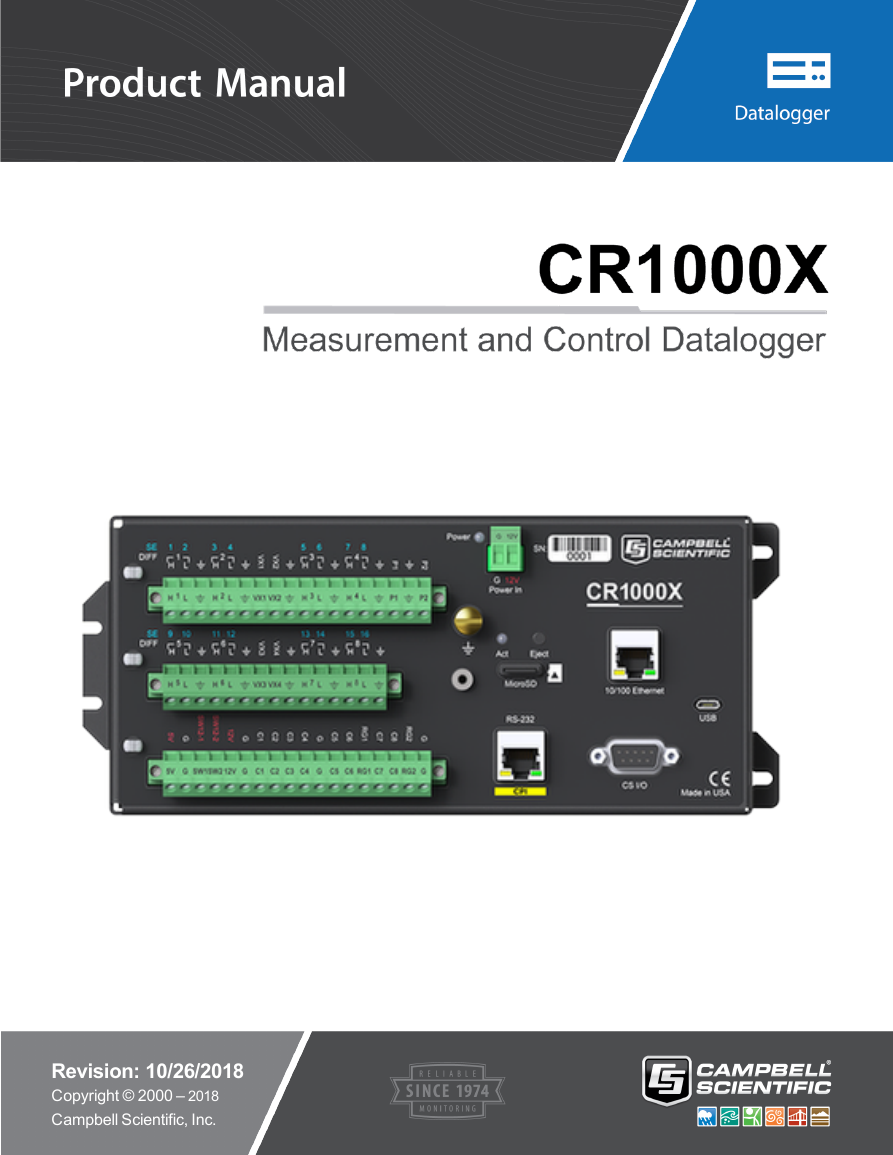
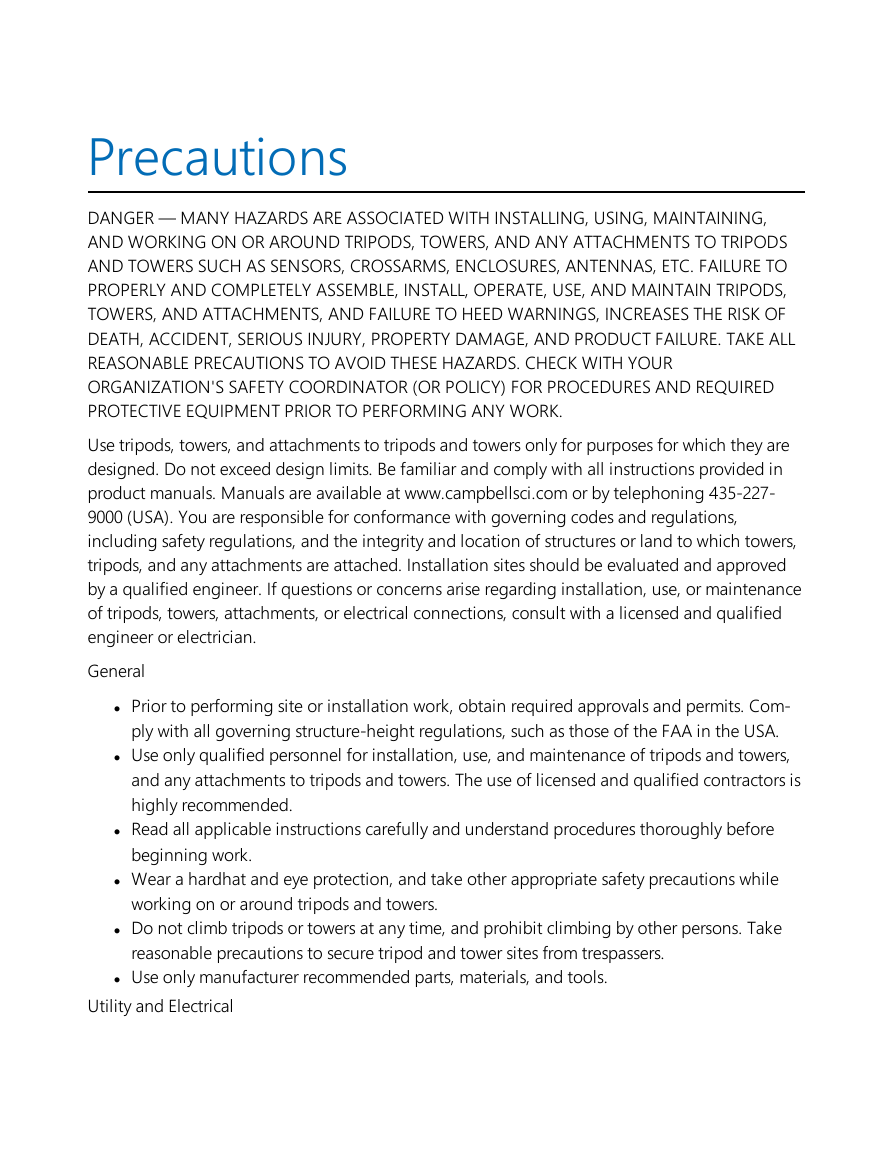
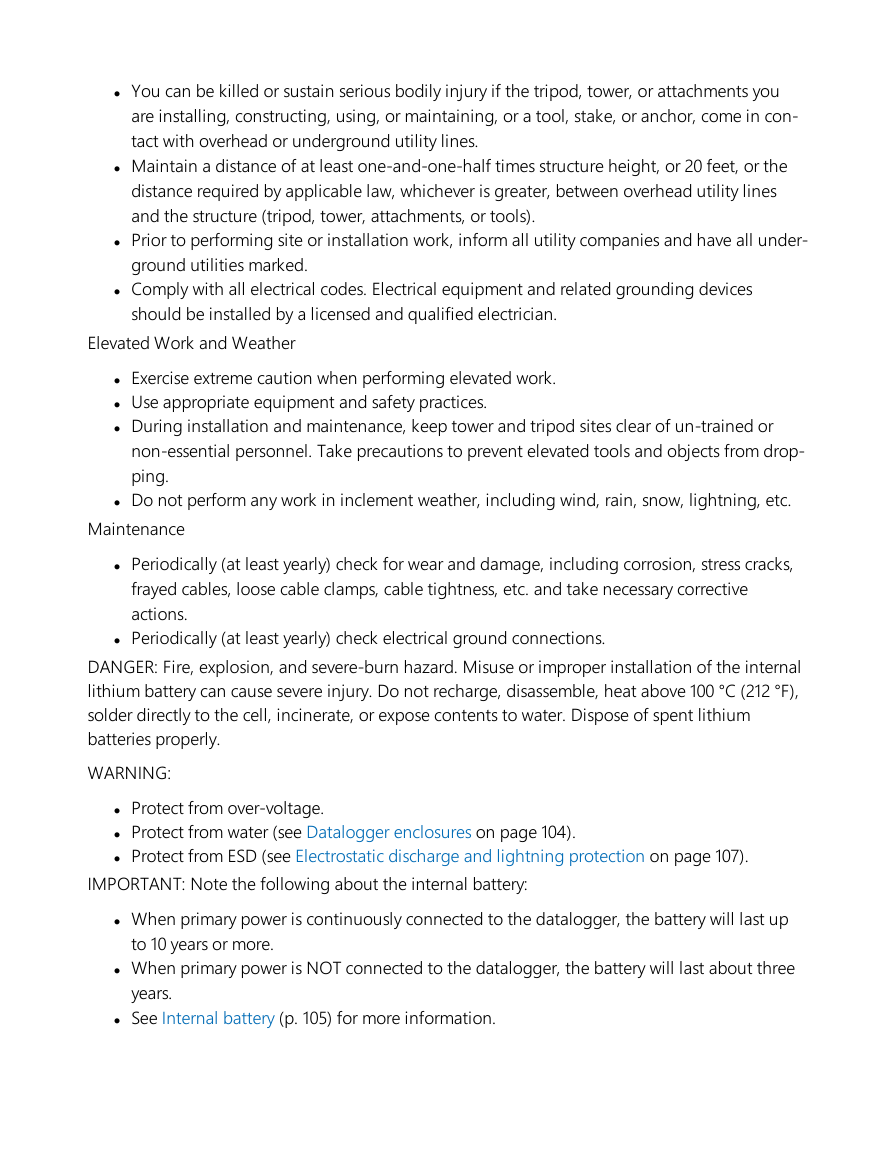
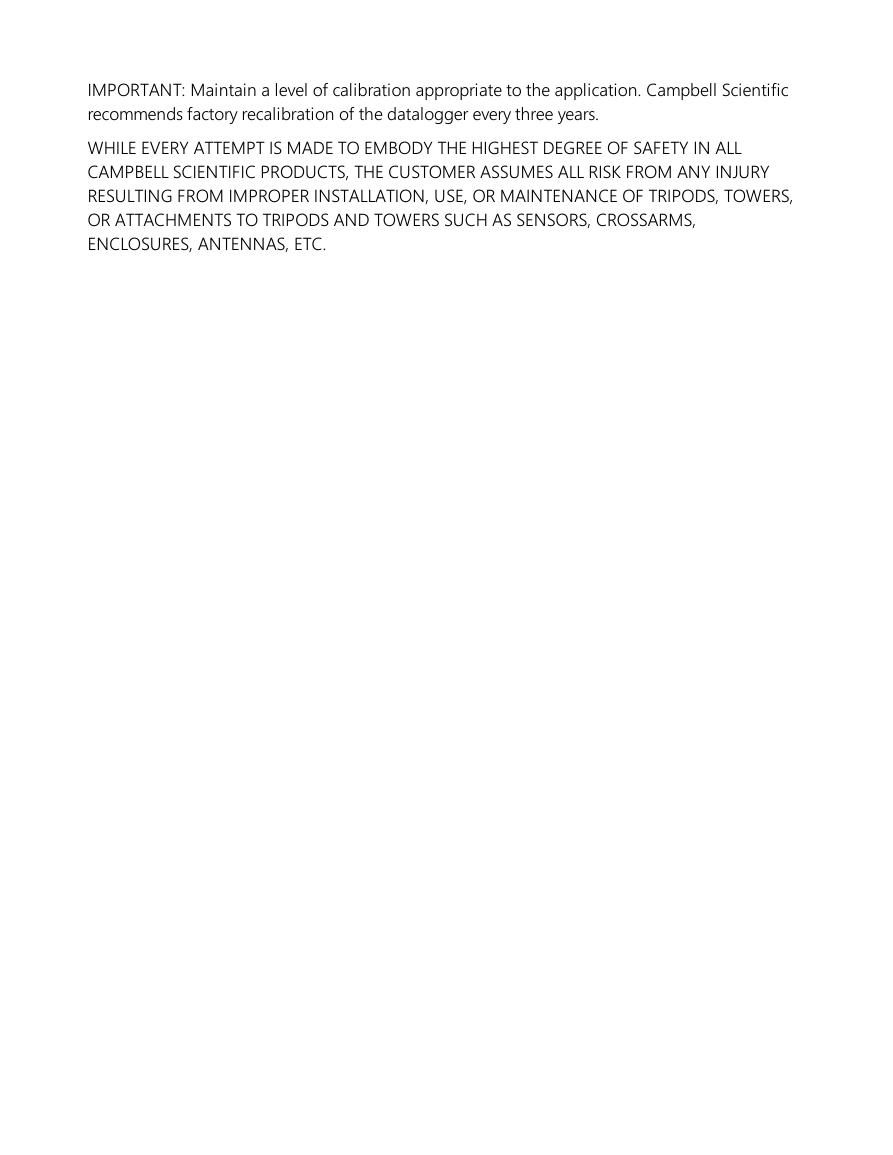
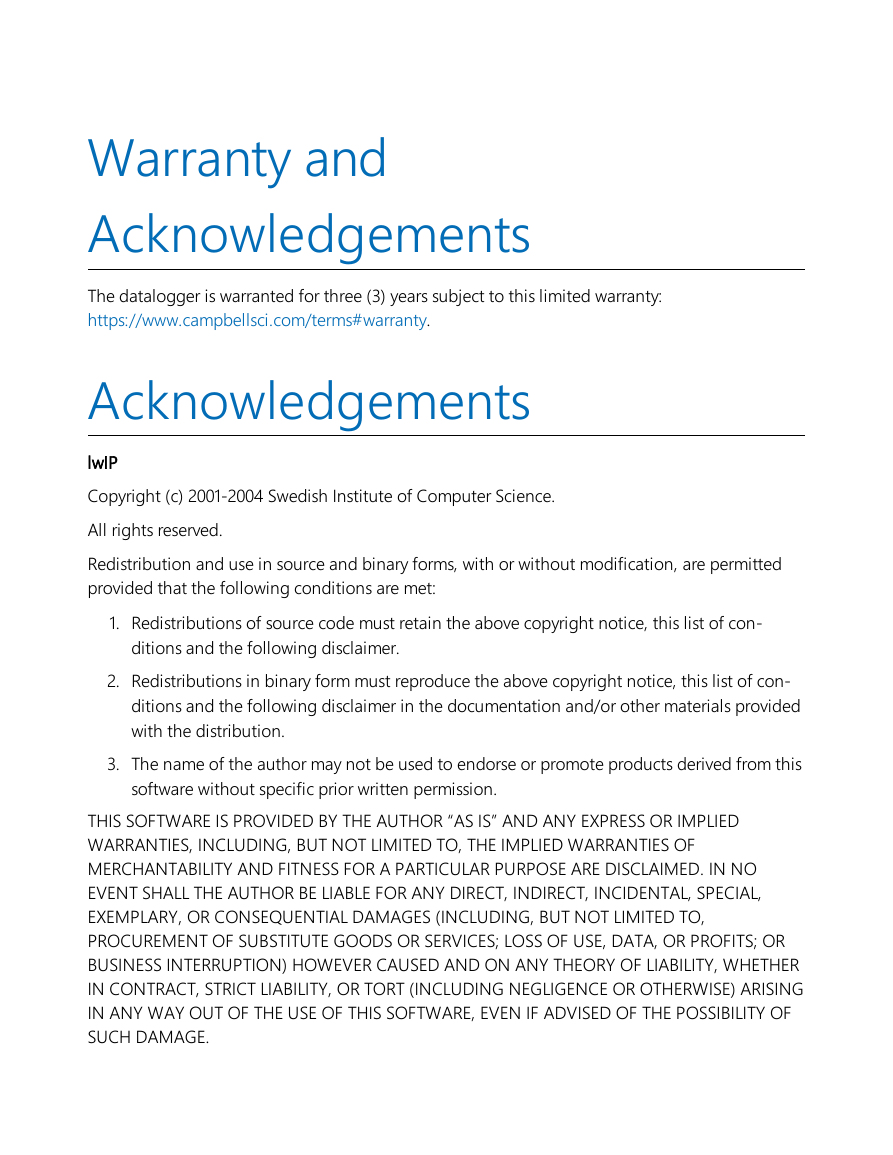
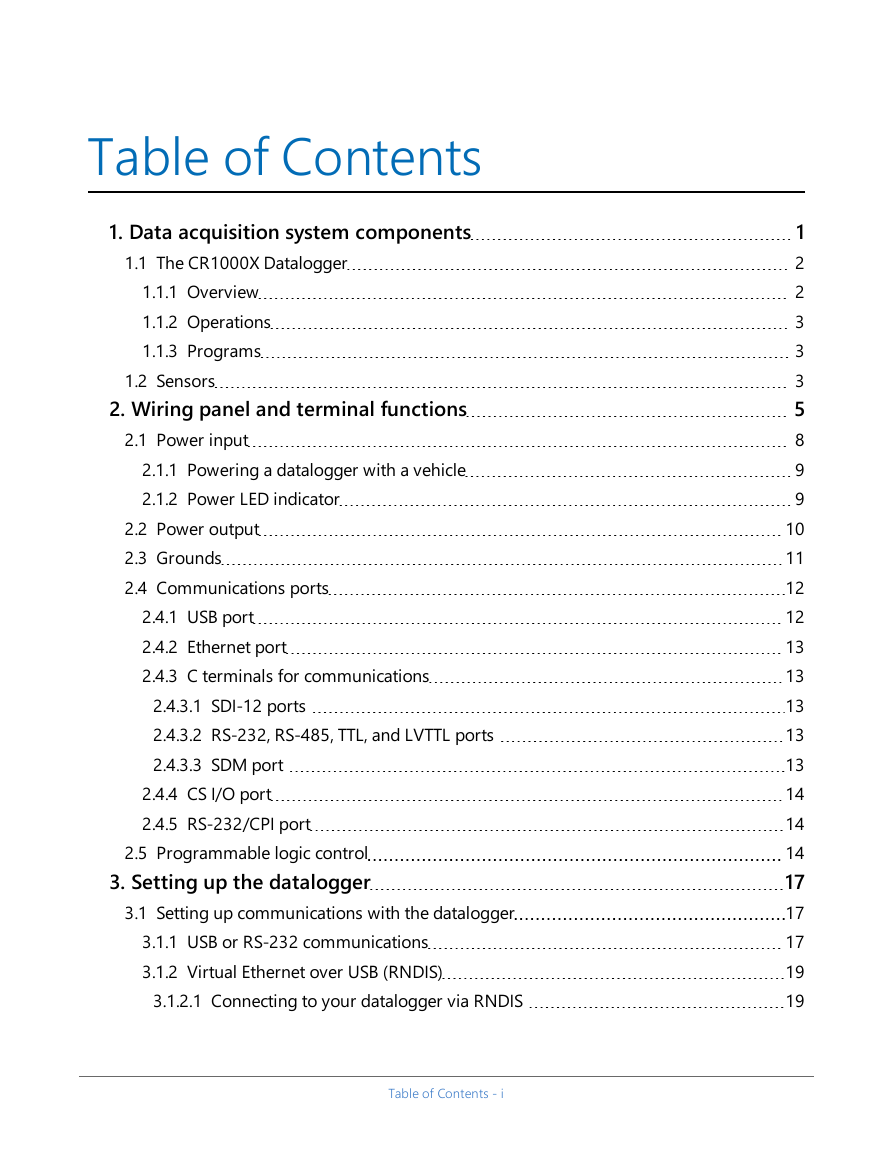
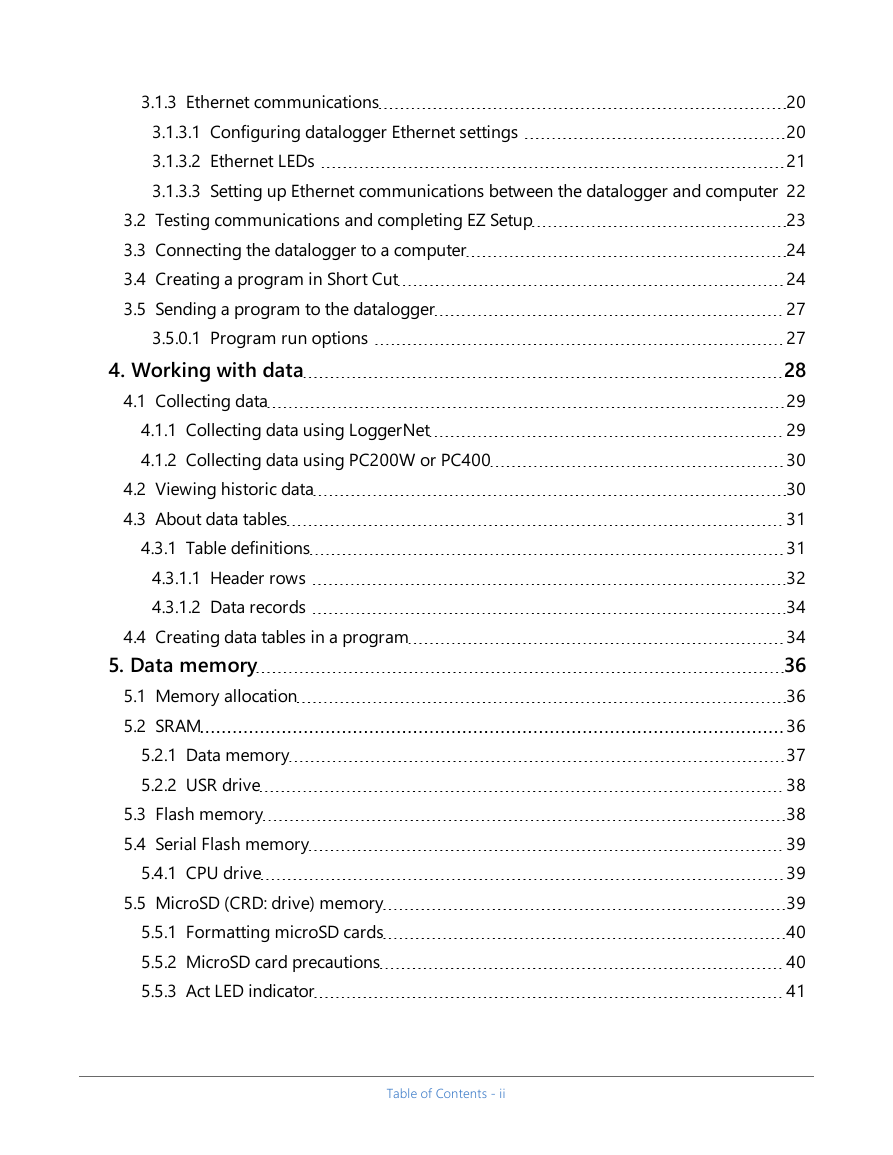
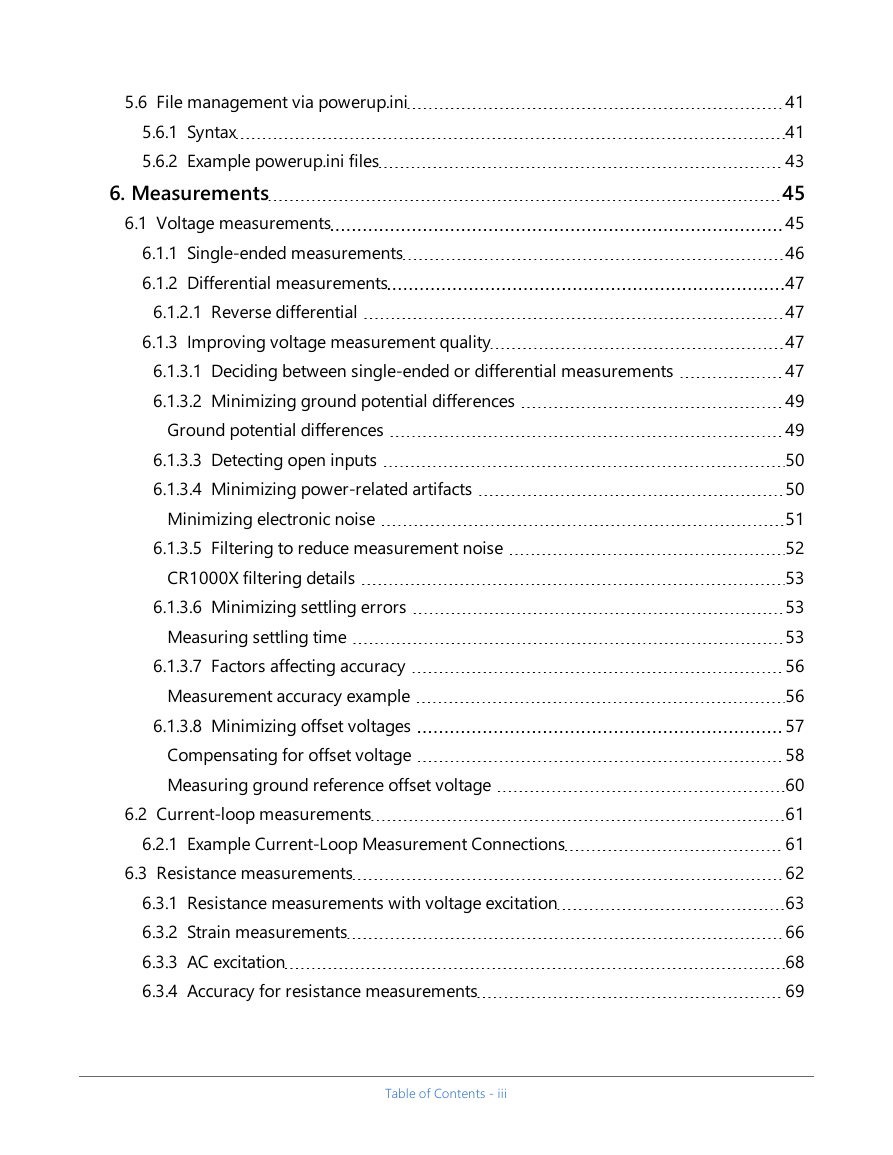








 2023年江西萍乡中考道德与法治真题及答案.doc
2023年江西萍乡中考道德与法治真题及答案.doc 2012年重庆南川中考生物真题及答案.doc
2012年重庆南川中考生物真题及答案.doc 2013年江西师范大学地理学综合及文艺理论基础考研真题.doc
2013年江西师范大学地理学综合及文艺理论基础考研真题.doc 2020年四川甘孜小升初语文真题及答案I卷.doc
2020年四川甘孜小升初语文真题及答案I卷.doc 2020年注册岩土工程师专业基础考试真题及答案.doc
2020年注册岩土工程师专业基础考试真题及答案.doc 2023-2024学年福建省厦门市九年级上学期数学月考试题及答案.doc
2023-2024学年福建省厦门市九年级上学期数学月考试题及答案.doc 2021-2022学年辽宁省沈阳市大东区九年级上学期语文期末试题及答案.doc
2021-2022学年辽宁省沈阳市大东区九年级上学期语文期末试题及答案.doc 2022-2023学年北京东城区初三第一学期物理期末试卷及答案.doc
2022-2023学年北京东城区初三第一学期物理期末试卷及答案.doc 2018上半年江西教师资格初中地理学科知识与教学能力真题及答案.doc
2018上半年江西教师资格初中地理学科知识与教学能力真题及答案.doc 2012年河北国家公务员申论考试真题及答案-省级.doc
2012年河北国家公务员申论考试真题及答案-省级.doc 2020-2021学年江苏省扬州市江都区邵樊片九年级上学期数学第一次质量检测试题及答案.doc
2020-2021学年江苏省扬州市江都区邵樊片九年级上学期数学第一次质量检测试题及答案.doc 2022下半年黑龙江教师资格证中学综合素质真题及答案.doc
2022下半年黑龙江教师资格证中学综合素质真题及答案.doc